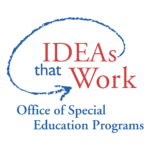This research snapshot provides an overview of a project led by Jason Okonofua, funded through the SERN K-12 Teachers and Classrooms Research Portfolio. The study employs a randomized placebo-controlled field experiment to test whether an intervention focused on teachers' empathic-mindset – valuing students’ perspectives and prioritizing the maintenance of positive teacher-student relationships – reduces and mitigates racial disparities in suspension rates.
Student Experience Research Network, (2021).
This document highlights national data regarding the percentage of time students with disabilities are educated with their typically developing peers. The data are disaggregated by placement, disability, race/ethnicity, and by state.
Office of Special Education Programs. 2022. OSEP Fast Facts: Educational Environments for School-Aged Children with Disabilities. https://sites.ed.gov/idea/osep-fast-facts-educational-environments-school-aged-children-disabilities/ (accessed September 16, 2022).
How to prepare/have courageous conversations with African American children to live in a world that sees their Blackness as a threat and/or less than other human beings.
O'Brien, N., & Tabb, L. "The Black Families' Guide for Talking about Racism." (2020).


